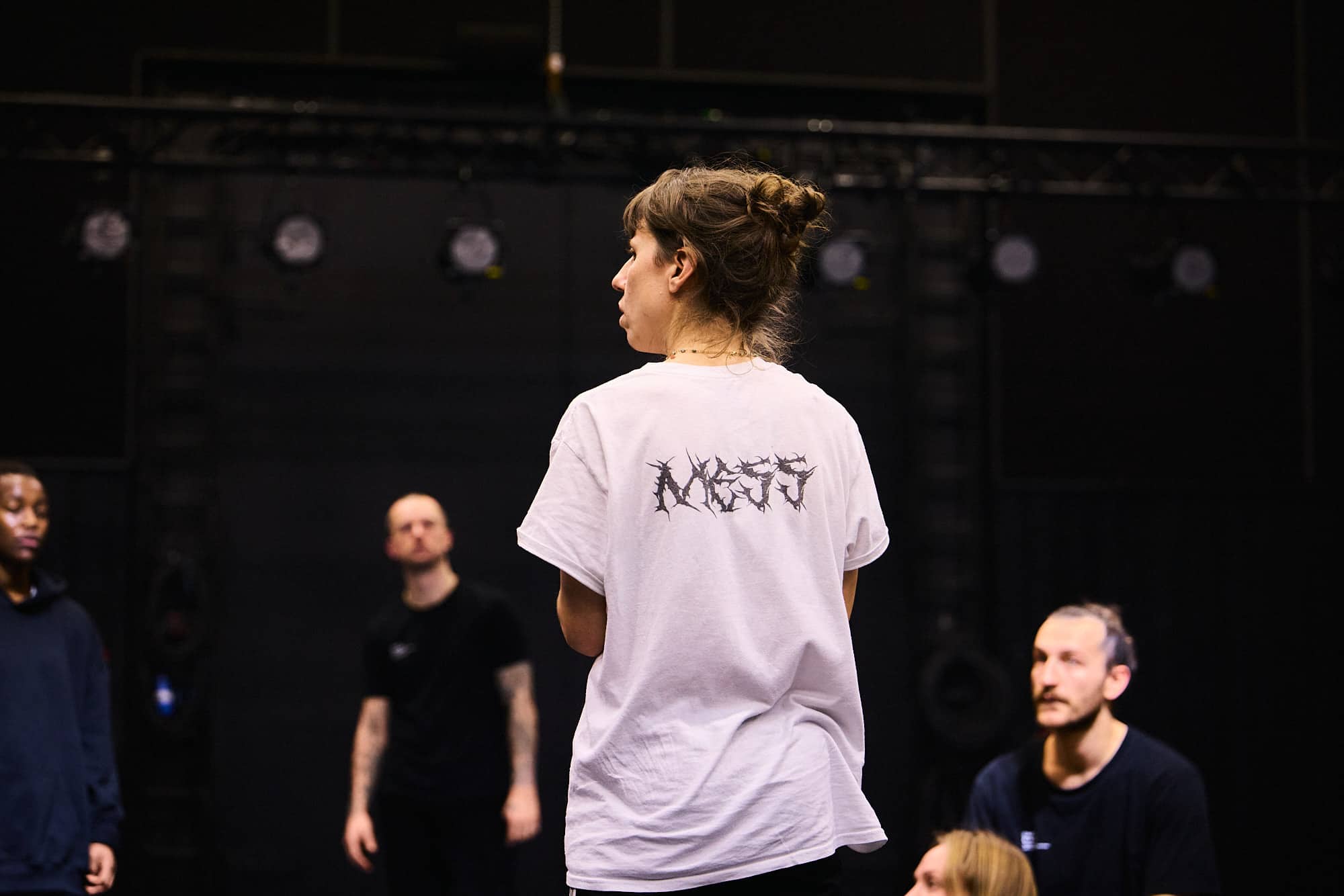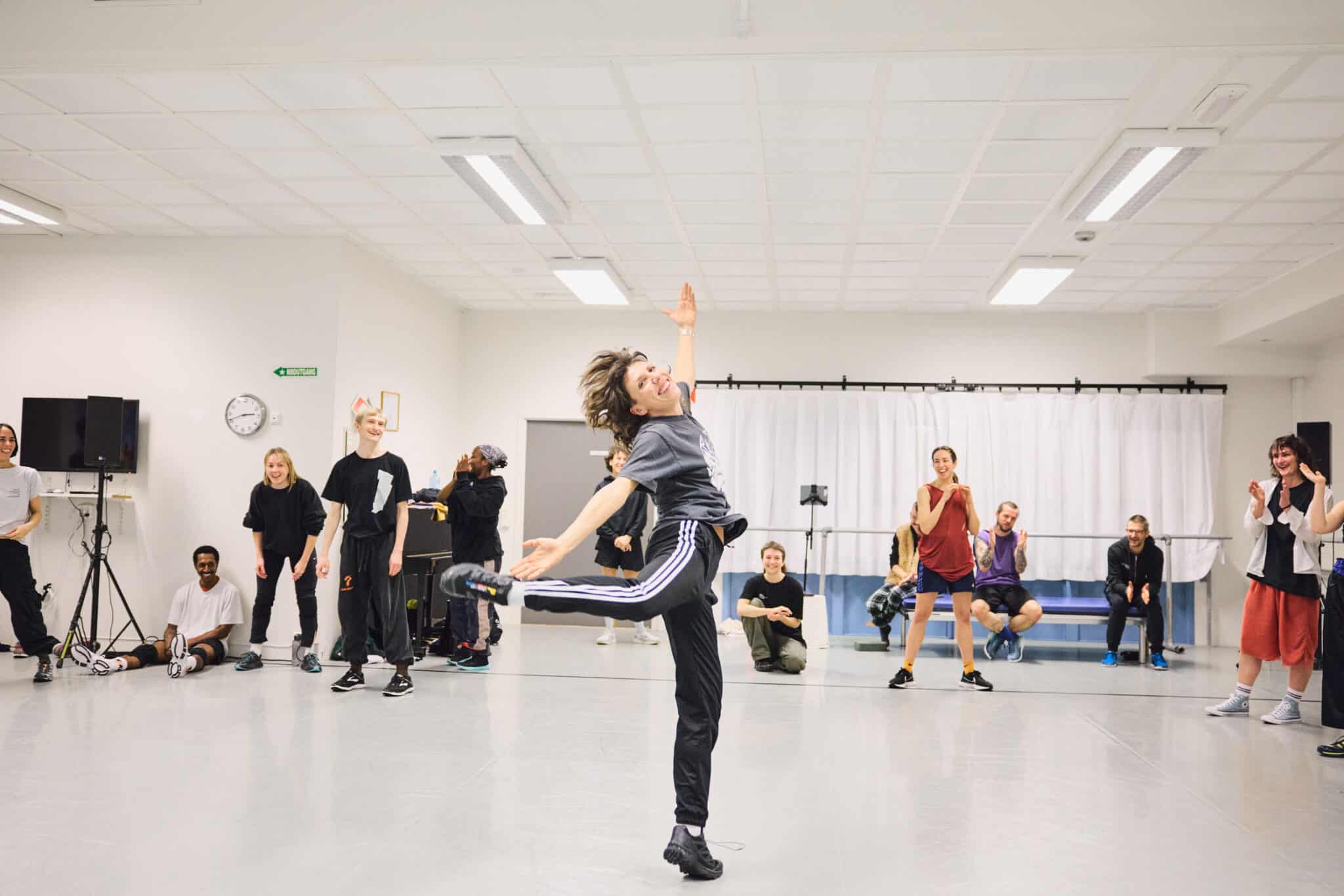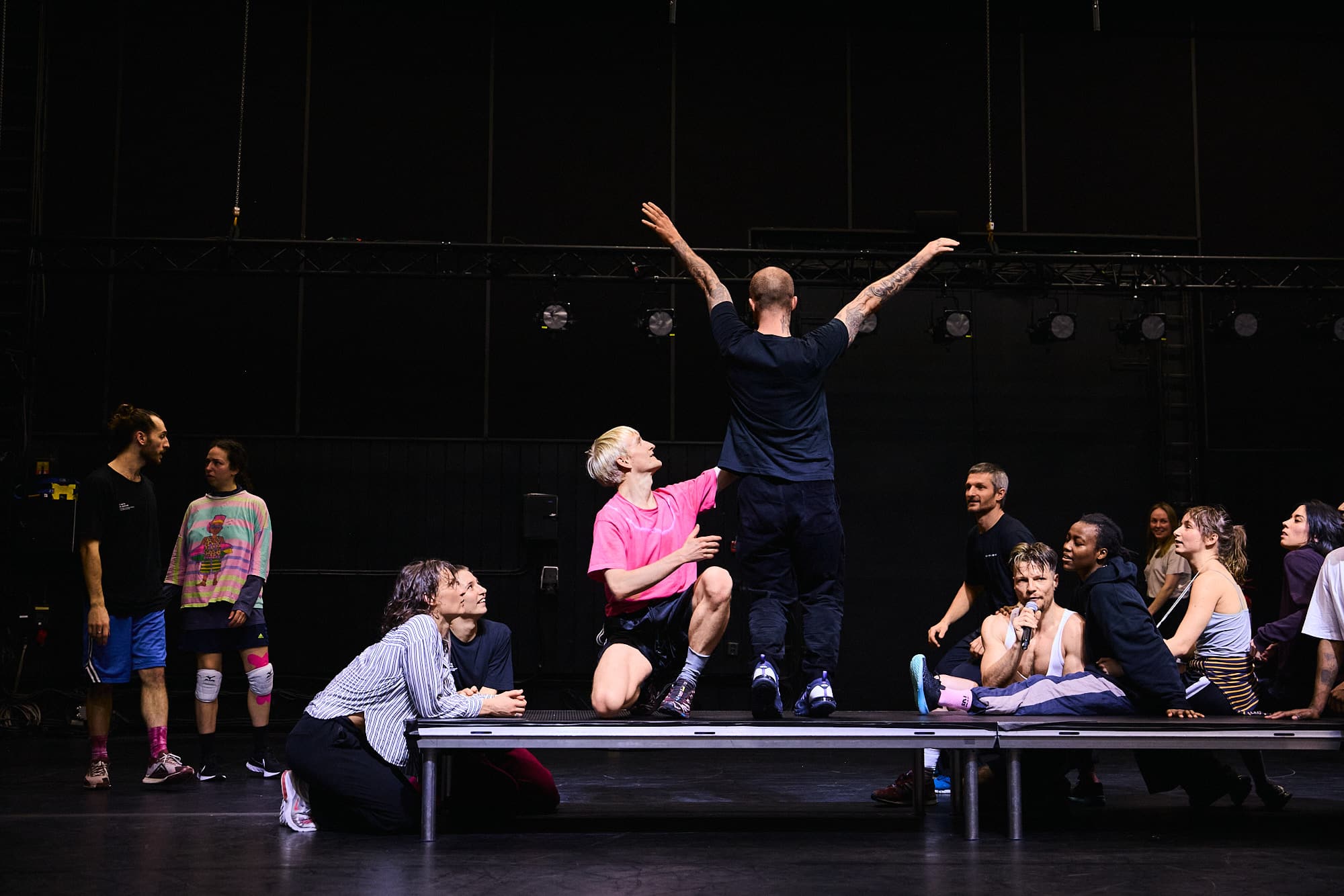How would you describe your artistic process? How has it been incorporating/including the Carte Blanche dancers in it? Are there specific methods or approaches you always return to?
I do my best to keep choreographing from the inside; meaning that I try to understand the material from the point of view of a performer. Even if the piece develops in scenes or tableau, the main tool I use is the experience of the dancers and the understanding I could have related to them as performers. HOW ROMANTIC is based on their intuition, internal spirit, and wit, as a lot of the material has an improvisational margin that the dancers explored during the rehearsals, and they will keep exploring during the performances. Everybody’s experience was important to me to understand what the materials do to them, and then to me, as a spectator. It was a constant relay of understanding.
We worked a lot with the idea of ”rehearsing as performing” and ”witnessing the others”. The rehearsals had a big amount of repetition, but not of a specific form or movement, but mostly repetition of practices, that feel at the same time very open in terms of creativity and specific in terms of technique and in terms of their function as metaphors.
The more you do as a performer and write choreography for yourself; the body develops habits and memories that become the basic material. It is a way to train your intuition and understand your intentions. I provided a framework, and the dancers dived into situations where they swam until a certain pattern, behavior, and quality was established. We kept working with that as a new base for the piece.
The other element that is very important for the process is the sound. It works as a dramaturgical tool and contextualizes the experience of the performer and of the audience. It gives meaning to seemingly abstract situations. For this piece, I worked with Cristian Sotomayor while rehearsing with the dancers. To create the universe that I wished on stage, it was important for me to build up a fiction and beef up the dancers’ and audience’s hearing.
“HOW ROMANTIC” draws inspiration from the dance marathons of the 1920s – 1930s. What fascinates you about this cultural and societal phenomenon, and how has it influenced your work? (Ref. They Shoot Horses, Don’t They? – directed by Sydney Pollack.)
I already knew about this phenomenon before I began the research on HOW ROMANTIC, but my fascination never really went away. These human endurance contests seem to be the first live reality show. A perfect image of the absurdity of our society in its large scale. A perfect example of the paradox of intimacy and the struggles in life as a spectacle, as a race without a finishing line.
What triggers my curiosity is the despair from all parties involved: the participants, who strived for mainly a roof over their heads, and the audience, who were searching for some relief watching others in a worse position than themselves. It was desperate people being watched by desperate people to enrich a politically and financially unbalanced system. The era of the great depression is a historical moment that feels very familiar to me, even on a personal level.
The despair of those days and the degree of absurdity of human behavior at these moments makes me very emotional. This emotional intensity influenced the way I work, always balancing between wit and sadness in the materials shared with the dancers. There is tragicomic taste in the work and a clear desire to disobey while obeying all the codes of a dance piece.
Whilst I got familiar with the film during my research, it stimulated a more cinematographic way of thinking about choreography. I needed to build up sequences that replicate the film’s effect on my mood, and use some crucial elements (couples, MC, horses race, commentary, entertainment, desire to pass the limits, contact and carrying and lifting the other, confusion,) and even though the piece doesn’t have a narrative line, it does echo the atmosphere of the film.



